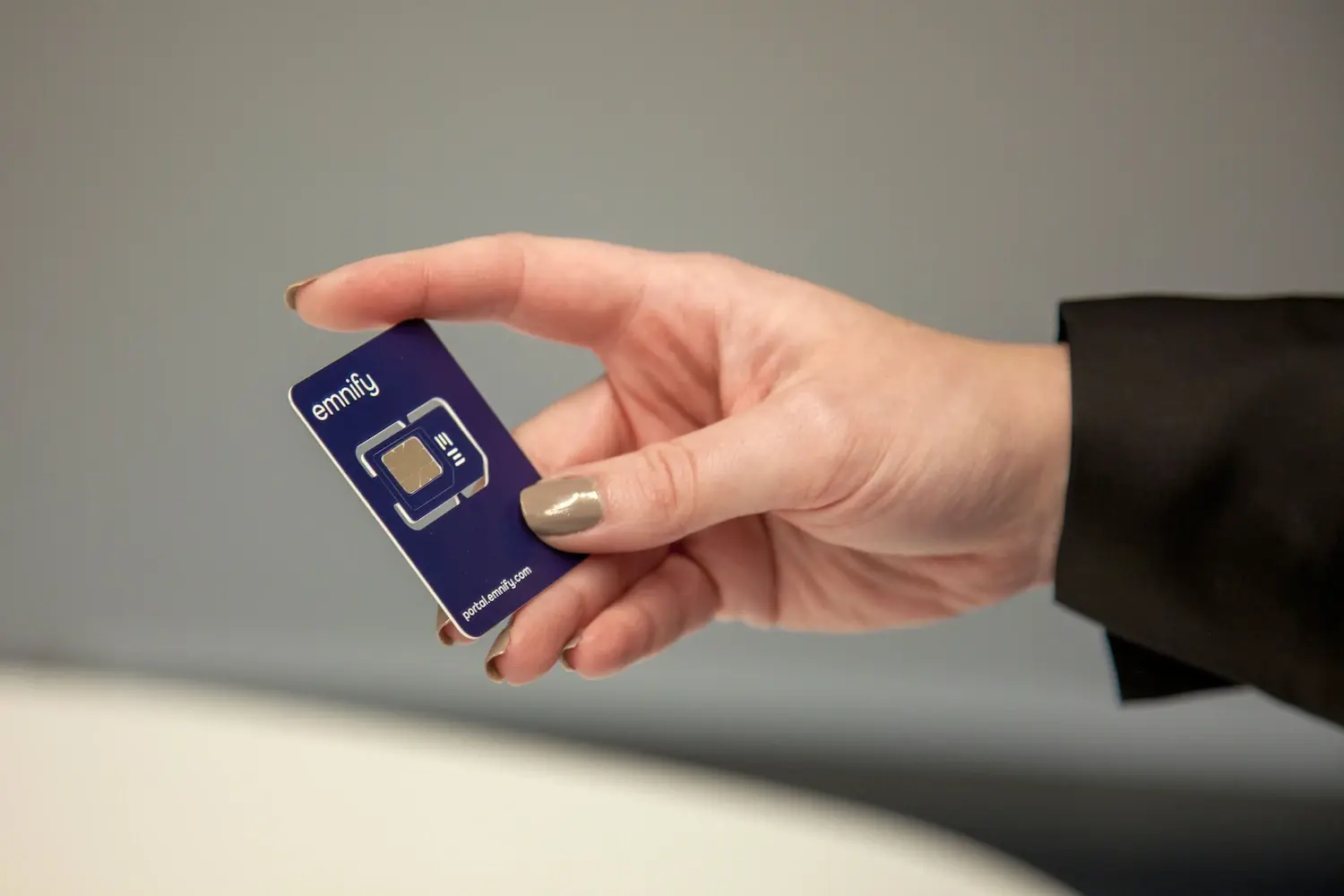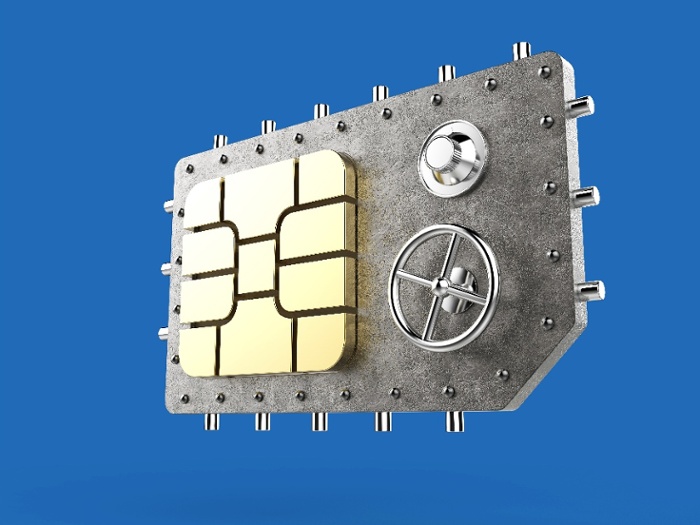

IoT SIM providers like emnify equip your business with subscriber identity module (SIM) cards, enabling your Internet of Things (IoT) devices to connect to cellular networks and transport data to your application. These components are critical to the success or failure of your IoT solution, and the IoT SIM provider you choose has a major impact on your customers.
Your IoT SIM provider affects:
- Where your devices can deploy
- The kinds of cellular networks you’ll have access to
- Connectivity costs
- What you can do with your connectivity data
- How secure your data transmissions are
- The SIM form factors available to you
- And much more!
Making the right choice is crucial. But if you’re not familiar with the differences between IoT SIMs and the providers that offer them, it’s hard to know what to look for. In this guide, we’ll help you understand the key factors you should compare, both about the types of SIMs a provider sells and the additional benefits an IoT connectivity provider should give your business.
First, let’s talk about what makes an IoT provider different from a traditional cellular carrier.
Traditional cellular carriers vs. IoT providers
Cellular carriers are monolithic organizations that have spent decades building their networks and their reputations. So it’s understandable that you’d be curious about their cellular IoT solutions. But here’s the thing about traditional Mobile Network Operators: their businesses were built for cell phones.
Traditional carriers have great network coverage in a single country, then roaming agreements with a small selection of other carriers outside of the region they cover. If you plan to deploy and operate your solution globally, this isn’t going to cut it.
Not only can they only serve a handful of countries, but you’re never going to have redundant coverage in the carrier’s home network. This means that if you’re in the US and you have a US-based carrier, you’re out of luck when your device enters a dead zone or gets spotty coverage.
IoT providers like emnify have purpose-built solutions for the Internet of Things. These IoT SIMs connect your devices wherever you deploy and come with built-in redundancy to maximize uptime, and include a number of features you simply can’t get with a traditional carrier.
Comparing IoT SIM providers
As you evaluate your options, it’s worth examining how each provider stacks up in terms of coverage, cost, Internet breakouts, redundancy, security, and integrations. You’ll also need to know how they’ll provision your SIMs with a new profile. (Do their SIM cards have eUICC or Multi-IMSI technology?) These factors have a substantial impact on your business operations and your product’s performance.
Coverage
First and foremost, you need an IoT SIM provider that gives you the coverage you need. Many MNOs say they offer global coverage, but there’s a limit to the number of countries and networks they can connect to. It’s important to consider your immediate plans for deployment and where you see your business deploying in the future. If a provider doesn’t cover those countries or only has limited options there, it’s not the right choice for you.
And of course, not all cellular networks are the same. There’s a big difference between 2G, 3G, 4G, 5G, LTE-M, and NB-IoT. Make sure the coverage a provider offers will actually support your use case and device.
Data plans
With IoT data plans, it’s important to choose an option that meets your device data volume demand and can easily scale up and down with your business. Ideally, you do not have to pay for unnecessary data volume packages and SIM cards should be possible to suspend so you do not have to pay anymore.
And even if some devices may use more data than they should there should not be any overcharge as long as with other devices the data is paid for. With data pooling based on active SIMs you’re billed for all of your devices on a single plan, and you don’t have to worry about fluctuations in data consumption.
Internet breakouts
When a device transmits data in traditional networks, the transmission actually travels to a central server of the operator before it “breaks out” to the public Internet. This is known as “home routing”. The further your device is deployed from your network’s Internet breakout, the longer it takes to transmit the data. That’s a problem if your IoT devices are deployed all over the world and you have data processing agreements that the data should be kept local. But not if your IoT SIM provider uses regional Internet breakout.
emnify’s cloud native platform enables us to use a dynamic regional Internet breakout model, where your traffic gets routed through local servers to keep data local.
Network redundancy
In IoT, redundancy is critical to avoiding downtime. But not all IoT SIM providers can give you the same level of network redundancy. The best providers offer redundant infrastructure, from servers to network types to carriers and microservices. The more redundancy a provider offers, the less your connectivity will be affected by natural disasters, emergency maintenance, and unforeseen circumstances.
eUICC and Multi-IMSI
Every SIM has an operator profile that allows your device to connect to a specific carrier and any networks they have roaming agreements with. When your device is an area without coverage, needs to adhere to local regulations or your carrier goes out of business or no longer supports the connectivity you need, or the country you deploy in doesn’t allow roaming, you may need to provision your SIMs with a new profile. For that, you have two options: an embedded Universal Integrated Circuit Card (eUICC), or Multiple Individual Mobile Subscriber Identities. These two technologies enable you to switch profiles Over-the-Air, but not all providers offer these solutions.
Integration
You already have a variety of tools you use to manage your deployments and handle business operations. The device and connectivity provisioning process can increase your cost - and automating your business processes with no-code solutions like Zapier can improve your scalability. As you grow and handle more and more devices your operation team may not be interested in looking in different portals for managing devices and connectivity. While emnify’s IoT communication platform gives you this option, our API and Datastreamer Webhook also integrates with the tools you already use, bringing your connectivity data to the places it’s most valuable and accessible to your business.
Security
Cellular connectivity is secure by design, but in IoT, security is always a major concern. And some providers do a better job by automating how IoT communications can be secured and are more cost efficient doing so. Traditional operators often require to setup a private APNs which takes months to setup and are actually not required anymore when using an innovative provider, that can create IPsecs without private APNs. Also look for additional fees for static IPs and VPNs. WIth emnify’s IoT SIMs static IPs and OpenVPN are included in the offer - and a secure private network with IPsec or AWS Transit Gateway can be setup within a matter of minutes.
SIM card form factors
SIM cards are essentially the packaging for your SIM, and they come in five different form factors: 1FF, 2FF, 3FF, 4FF, and MFF2 (also sometime ambiguously called eSIM). The form factor you choose determines how the SIM card has to be installed in your devices, how much space they’ll take up, and how durable they are. As you choose an IoT SIM provider, consider the SIM form factor you need and make sure the provider offers it.
Get a free IoT SIM test kit
Want to see how easy it is to get started with emnify? Sign up to receive a free trial pack, complete with an IoT SIM card and everything you need to get connected and secure your transmission for a 60 day trial. With emnify’s SIMs, your IoT devices can connect to more than 540 networks in over 180 countries. Our IoT experts are at your disposal and ready to help you deploy.
Get in touch with our IoT experts
Discover how emnify can help you grow your business and talk to one of our IoT consultants today!

The content team of emnify is specialized in all things IoT. Feel free to reach out to us if you have any question.


